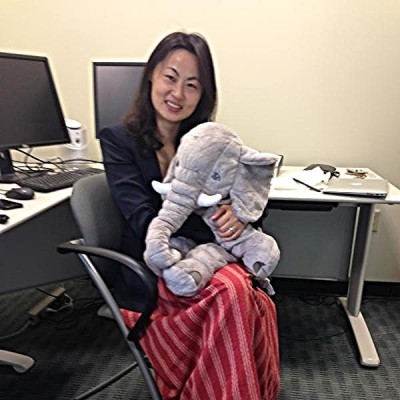I gave a presentation on “Consumer Pseudo-showrooming Behaviors and Firm Omni-Channel Product Placement Strategies” to UConn School of Business faculty. Claire Hall wrote a piece about it. Here is the link:
http://www.business.uconn.edu/2015/02/20/uconn-marketing-professor-colleague-find-that-merchants-can-use-in-store-showrooming-to-boost-online-sales
Below is the article.
“Most consumers today split their shopping experiences between traditional brick-and-mortar stores and internet purchases. But if you believe that traditional, in-store browsing is facing extinction, think again.
In fact, it is often a trip to the mall or shopping center that gives consumers the confidence they need to buy similar, or more upscale, items online, according to research conducted by UConn Assistant Professor Jane Gu and her colleague, Giri Tayi, from the State University of New York at Albany.
Gu presented her research to UConn School of Business faculty and graduate students in a seminar titled, “Consumer Pseudo-Showrooming and Omni-Channel Product Placement Strategy,” on Jan. 23. Her conclusion is that both consumers and merchants can benefit from the synergy when stores allow shoppers to examine merchandise in person and also feature an internet service that offers great prices and more variety of merchandise.
“Our study examines the important role of consumer ‘pseudo-showrooming,’ or the consumer behavior of inspecting one product at a seller’s physical store before buying a related, but different, product at the same seller’s online store,” Gu said. A profitable product-placement strategy allows the seller to carry a larger product assortment at the online store than the physical one.
Consumers can be picky, and the only way to full resolve whether a product meets an individual’s expectation is to inspect it in person, she said. So a customer who tries on a blue sweater at the physical store can then decide if the color, style and cut are satisfactory and, if so, purchase it.
But what if that customer prefers the sweater in red, and it is only sold online? Or if a family wishes to buy a set of patio furniture from the home-improvement store and it is only sold online? Or that expensive baby stroller isn’t available in the showroom, but another model by the same company is?
Shoppers can gain some confidence about their online purchases by inspecting a different, but related product in-store, such as another item offered by the same brand, Gu said. By doing so, the consumer learns about the styling and manufacturing features of the brand, which gives him or her a better idea about the preferred product’s appeal before ordering it online.
In fact, a recent IBM study found that nearly half of all online purchases resulted from shoppers visiting a physical store, Gu said.
“Our analysis shows that compared to selling both products through the dual channel, the merchant obtains a greater profit by selling only one product through the dual channel and the other through the online channel exclusively, with the effect of inducing consumer ‘pseudo showrooming,’– if the fit probability of products and consumers’ cost for returning a misfit product are both in the intermediate range,” Gu said.
The visit-in-store/order-online concept allows merchants to carry a large assortment of different, but related, products at the online store, while displaying only a subset of the products at the physical store, she said. Macy’s, J. Crew, Wal-Mart and Banana Republic are only a few examples of companies that have adopted this strategy, she said. This product placement strategy, by inducing consumer “pseudo-showrooming,” benefits the seller by better coordinating its online and the offline operation, in addition to saving merchants the expense of carrying a great deal of product in store.
This synergistic effect between the online- and offline- channel may also explain why some companies that were exclusively online—such as Piperlime, Warby Parker and Amazon– have now added shops, Gu said.
Lastly, when a firm offers two products of different qualities, it garners the most benefit from consumer ‘pseudo-showrooming’ by selling the higher quality product through the online channel exclusively, she said. For example, the apparel chain J. Crew sells its high-end pieces, such as suiting jackets and wedding dresses, solely at its online store; and the more expensive furniture pieces that Home Depot carries are usually available only online.
Not all items have the same degree of consumer satisfaction, Gu noted. Clothing and furniture, for instance, tend to require more in-store inspection. Consumers might be more willing to buy a well-regarded computer or camera without first examining the device. ‘Pseudo-showrooming’ partially resolves consumer online purchasing uncertainty but doesn’t guarantee satisfaction.
Interestingly, the online experience seems to have a higher “misfit tolerance level” than in-store shopping, Gu said. Because returning merchandise involves time, effort and even psychological burden, Gu’s research found that consumers will tolerate a certain amount of “misfit”—minor dissatisfaction–with an online-purchased product because they don’t want to expend the time and energy required to return it. That ultimately benefits the merchant because more merchandise is sold.
On the other hand, the merchant, in the effort to induce online purchases from fit-uncertain consumers, tends to charge lower prices for their online-exclusive products, which eventually benefits consumers who keep the product, particularly those who find the product satisfactory.
Therefore, both customer and merchant benefit from the multiple channel shopping option, she said.”



